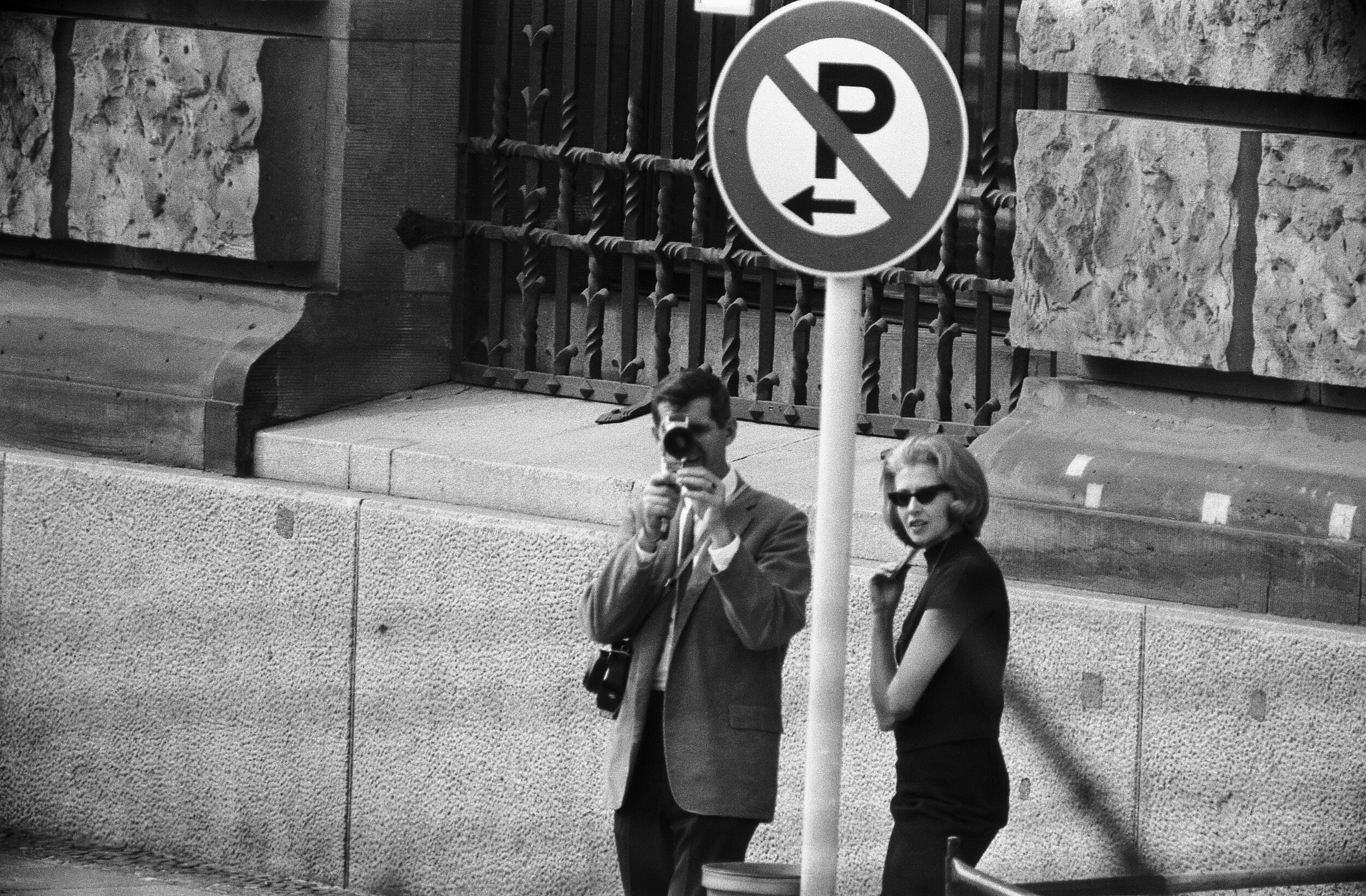
BOOK CHAPTERS
-

Moholy-Nagy: Shadows and Space-Time
In Modernist Aesthetics in Transition: Visual Culture in the Weimar Republic and Nazi Germany, eds. Deborah Ascher Barnstone and Donna West Brett (Bloomsbury, 2024).
How did German aesthetic values change during the Weimar Republic and after its immediate collapse at the beginning of the National Socialist period? Contrary to conventional narratives that depict modernist aesthetics as static, shaping principles of modern art and design, this volume argues for their complexity and ever-shifting nature.
IMAGE: László Moholy-Nagy, Special Effect for “Things to Come”, 1936, by H. G. Wells, 1936, London Film, gelatin silver print, 40 × 29.2 cm.
-

Ilse Bing: Surrealism and Oneiric Paris
In Juan Vicente Aliaga, ed., Ilse Bing(Stockport, Dewi Lewis Publishing and Fundación MAPFRE, Madrid), 2022), 47-55. In English, Spanish and Catalan.
German photographer Ilse Bing (1899-1998) has secured her place as one of the major photographers of the 20th century.
This book, published in association with Fundación MAPFRE, coincides with a comprehensive retrospective of her work being shown in Madrid by MAPFRE from September 2022 to January 2023. The book offers a chronological and thematic survey of Bing's intense creative career and includes over 160 photographs as well as texts by leading experts Juan Vicente Aliaga, Benjamin Buchloh and Donna West Brett. 160 photographs, 296 pages.Spanish/Catalan language edition: Donna West Brett, Ilse Bing. El surrealisme i el París oníric , in Juan Vicente Aliaga, ed. Ilse Bing, Madrid: Fundación MAPFRE, 2022.
-

László Moholy-Nagy: Adventures in Light, Space and Time.
in Material Modernity: Innovative Visual Work in the Weimar Republic, eds. Deborah Ascher Barnstone and Maria Makela (New York: Bloomsbury, 2022), 143-164.
Material Modernity explores creative innovation in German art, design, and architecture during the Weimar Republic, charting both the rise of new media and the re-fashioning of old media
IMAGE: László Moholy-Nagy, [Plexiglas Mobile Sculpture in Repose and in Motion], 1943, George Eastman Museum
-

Inadequate Images: Material Violence, Redaction & Pixilation in the Stasi Archive
In Law’s Documents: Materiality, Authority, Aesthetics, eds. Katherine Biber and Trish Luker (Routledge, 2022), 223-245.
Illuminating their breadth and diversity, this book presents a comprehensive and multidisciplinary view of legal documents and their manifold forms, uses, materialities and meanings.
IMAGE: BStU Berlin
-
On the Street: Photography & the City.
In Routledge Handbook on Street Culture, ed. Jeffrey Ross (New York: Routledge, 2021), 295-309.
Discussions of street culture exist in a variety of academic disciplines, yet a handbook that brings together the diversity of scholarship on this subject has yet to be produced. The Routledge Handbook of Street Culture integrates and reviews current scholarship regarding the history, types, and contexts of the concept of street culture. I
IMAGE: Louis-Jacques-Mandé Daguerre, Boulevard du Temple by Daguerre, 1838. Private Collection. Photo © GraphicaArtis / Bridgeman Images
-

Unsettling the Archive: The Stasi, Photography and Escape from the GDR
In Photography and Ontology: Unsettling Images, eds. Donna West Brett and Natalya Lusty (Routledge, 2019), 24–40.
This edited collection explores the complex ways in which photography is used and interpreted: as a record of evidence, as a form of communication, as a means of social and political provocation, as a mode of surveillance, as a narrative of the self, and as an art form.
IMAGE: Untitled [Observers of a possible escape incident in Berlin, 26th of August 1962]. Stasi Records Agency, Berlin, BStU MfS HA I 13255, Bild 0123 10
-

An Aesthetics of Disruption: The Latent Image & Ways Not to be Seen
Artmatter 02, Agency & Aesthetics (Auckland: Auckland Art Gallery Toi o Tamaki and Massey University, 2018), 28-37.
Artmatter 02: Agency & Aesthetics publishes 14 papers from a symposium on the expanded field of photography. Art historians, artists and theorists answer prompts such as, Can photography sustain its power to change public opinion, transform thinking and contribute to knowledge?
IMAGE: Joana Hadjithomas and Khalil Joreige, Postcards of War from the series Wonder Beirut, 1997–2006. Courtesy of the artists.
-

Looking and Feeling: Photographing Escape from East Germany
In Burcu Dogramaci and Elizabeth Otto, eds. Passagen des Exils (Munich: Edition Text + Kritik 35, 2017), 268-285.
IMAGE: Arwed Messmer, using a print, call number BStU MfS HA IX Fo 2180 Bl. 0004.
-

Exile and Erasure: Forgetting llse Bing
In Kris Belden-Adams, ed. Photography and Failure: One Medium's Entanglement with Flops, Underdogs and Disappointments (Bloomsbury, 2017), 45-60.
Throughout photography’s history, failure has played an essential, recurring part in the development and perceived value of this medium. Exploring a range of failures – individual and institutional, technological and historiographical – Photography and Failure asks what it means to fail and considers how this narrative of failure has shaped our understanding of photography.
IMAGE: Ilse Bing, Self-Portrait with Leica, 1931, Art Institute of Chicago. ©Estate of Ilse Bing.
-

Home and Homelessness: Ann Shelton’s Aesthetics of Displacement
In Ann Shelton: Dark Matter, (Auckland Art Gallery, Toi o Tāmaki, NZ, 2016), 58–63.
Ann Shelton: Dark Matter traces the 20-year career of a leading New Zealand photographer. Ann Shelton’s evolution as a camera artist with a unique, penetrating vision into the culture and history of New Zealand is beautifully illustrated in this book, which includes multiple examples from all her important bodies of work.
IMAGE: Ann Shelton
-

Interventions in Seeing: Surveillance, Camouflage & the Cold War Camera
In Ann Elias, Ross Harley and Nicholas Tsoutas (Eds), Camouflage Cultures: The Art of Disappearance (University of Sydney Press, 2015), 147-157.
Approaching the subject from the disciplines of art history and theory, art practice, biology, cultural theory, literature and philosophy, Camouflage Cultures greatly expands the reach of camouflage's cultural terrain. The result is a collection that provides a new perspective on the developing discourse of camouflage and contributes to debates about the roles that physical, artistic and social camouflage play in contemporary life
IMAGE: BArch, DVH 60 Bild-GR35-10-016 /ohne Angabe. Courtesy Arwed Messmer and the German Federal Archives
